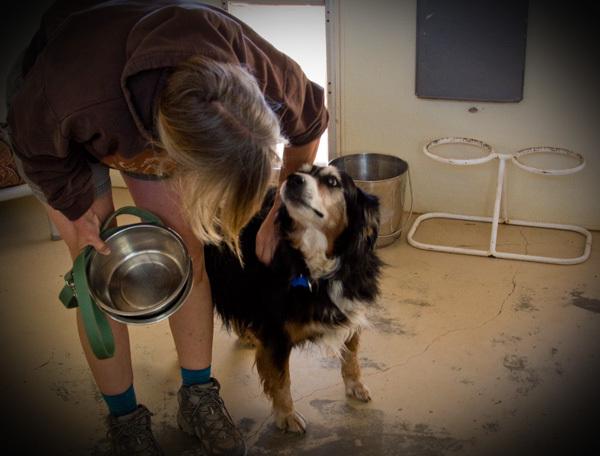
3,700,000
That’s approximately the number of animals euthanized in the United States each year.
They come to that end because of broken homes and busted dreams; because too few animals are spayed or neutered and because too many are deliberately bred; because their owners are completely out of options or simply out of patience.
It’s a shockingly high number. More than 10,000 every single day. For the most part those killings are conducted by shelters trying to free up room for the steady stream of new animals that come through their doors. The old, the sick and the unwanted are euthanized to give those animals more likely to be adopted a space and a shot. But the volume of new arrivals is so large that a typical shelter puts down 60% of the animals it receives.
If killing six in ten animals seems like a strange form of rescue to you, you’re not alone. Best Friends Animal Society in Kanab, Utah, thinks so too.
Born out of a church group in 1984, Best Friends has grown to become the largest no-kill shelter in the United States and a leader in the no-kill movement nationally. Housed in a scenic section of southern Utah that once served as the backdrop for Hollywood films like The Outlaw Josey Wales the sanctuary now cares for as many 1,700 animals on its sprawling 3,700 acre property.
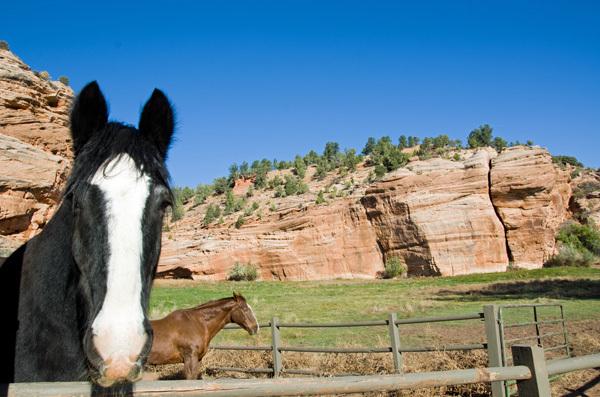
“Horse Haven” is also a sanctuary for burros, mules, goats and sheep who were all either abused, neglected, or simply unwanted.
With more than two acres per animal, wide open space is one thing that immediately distinguishes the shelter from others we’ve seen. Horses have room to roam, pigs have spacious pens, cats climb the rafters, and canines enjoy the large “gated community” known as Dogtown.
No Such Thing as a Lost Cause
With all of the animals in its charge you might be tempted to think that Best Friends is simply a warehouse for wayward animals, but that isn’t even close to what we found. Instead, we learned about Riley, a buckskin mare who arrived at the shelter with a leg problem so severe he required amputation. Had Riley ended up somewhere else, he’d likely have been put to sleep, but not here. At Best Friends Riley got the surgery he needed and a prosthetic leg as well. Knowing that he’d still have difficulty maneuvering on his new leg, they even built him a barn – Riley’s Barn – so he didn’t have to walk on winter snow and ice.
That kind of over-the-top care seems more the norm than the exception. Perhaps more surprising is that an equal amount of attention is given to addressing each animal’s psychological needs as well as their more obvious physical ones. Once abused animals are provided the space, time, encouragement and training they need to begin trusting people again. Even presumed lost causes like Michael Vick’s famous fighting pit bulls, of which Best Friends took in 22 of the most challenging cases, have seen remarkable progress.
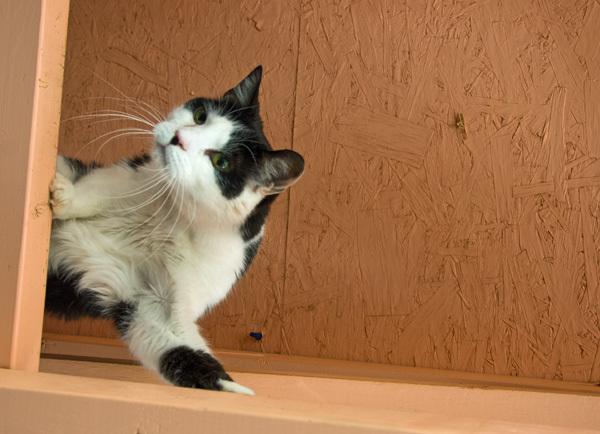
More than 700 felines occupy “Cat World;” a free-roaming indoor environment with screened porches for sunbathing and rafters for climbing.
These “Vicktory Dogs,” as they’re now known, were once seen by society and even by other animal rights groups like PETA, as too dangerous to let live. Ironically, after being rescued from Vick’s fighting ring they faced certain death at the hands of their rescuers who thought them incapable, or unworthy, of rehabilitation. But under the care of Best Friends, nine of these “lost causes” have already either been placed in new homes or are in the process of adoption. Seven more recently graduated to a status that makes them eligible to follow suit.
Turning Animals into Pets
Success like this doesn’t come easily, even for animals that never experienced the level of trauma endured by Vick’s pit bulls. For many the transition from shelter animal to beloved pet can be a difficult one, so great effort is made to prepare each animal for their eventual permanent home. Special facilities at the shelter are equipped with the kinds of surfaces and experiences pets are likely to encounter in houses; everything from linoleum floors to vacuum cleaners. Best Friends even has programs allowing volunteers to take the animals into town or home overnight so they are introduced to things that can’t be easily replicated at the shelter, like busy sidewalks and car rides.
These efforts pay impressive dividends. Whereas the normal return rate for adopted puppies can be as high as one in five, just two out of every one hundred animals adopted from Best Friends are returned. And in those rare instances where an adoption doesn’t work out, Best Friends stands ready to receive the pet – forever. Any animal taken in by Best Friends has a place to return to if needed for the rest of its life.
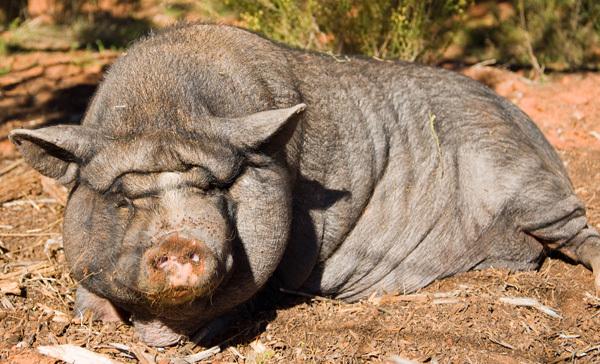
Potbellied pigs can make terrific pets but often lose their homes because of laws that treat them as farm animals.
That kind of lifetime commitment, not to mention the extensive care and attention provided to each animal, requires resources, lots of resources. In 2011 Best Friends spent more than $19 million on its animal care activities, about 91% of which came from individual donations and planned gifts. Not included in that budget is the value of work done by the roughly 7,000 visitors who volunteer at the shelter each year.
Better to Give Than to Receive
One of the ways Best Friends attracts this legion of workers is by making volunteering easy. Whether you have a single afternoon to offer or several months your contribution is always welcomed. Available tasks range from the completely unskilled, like feeding and cleaning to construction and landscaping. A dedicated Volunteer Department ([email protected]) allocates and organizes the thousands of helping hands toward their most productive use.
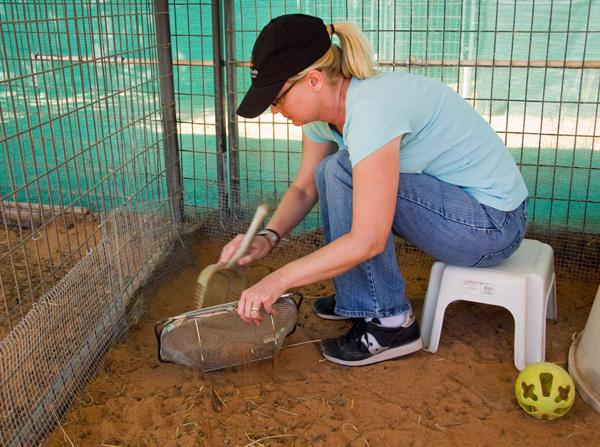
Volunteers, like Shannon here, get to see firsthand how their efforts make life just a little bit better.
An added draw is that many of the volunteering opportunities are simply enjoyable. Socializing animals is an important part of their rehabilitation, so many volunteers spend their time walking and playing with pets. During our visit we asked to be placed where the need was greatest and found ourselves in Wild Friends Rescue Village, an area set aside to house hundreds of rabbits rescued from a hoarding situation.
The residents of Wild Friends will never leave. Because of previous neglect many are sick and even paralyzed. Most have injuries from fighting amongst themselves. Nearly all are frightened of humans and are ill-suited to be pets. But at Best Friends they’ll at least live out their remaining days in relative comfort with care and companionship. And like the rest of the animals here who once needed help when the chips were down, they found the most remarkable thing imaginable: a Best Friend for life.

